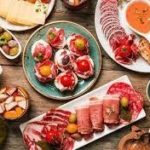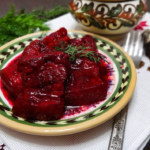Our worldwide food phenomenon is in a difficult situation. By 2050, gauges propose that the worldwide populace will develop to 10 billion and our present agrarian framework can’t ensure a sound and healthfully adjusted eating regimen for that individuals. While there are many issues we need to survive, including the ecological expenses of plant cultivating, our over-dependence on meat and dairy and the absence of nourishment in our eating regimens, probably the greatest issue is that we don’t eat enough sorts of food. Modern farming depends intensely on a small number of yields, to the disadvantage of the indigenous habitat and human wellbeing.
The entire article rundown incorporates a scope of vegetables, grains, seeds, oats, nuts and beans from around the world – 50 altogether similar to a recent article from Betway Casino. We have the lowdown on what food sources were highlighted and why this report matters.
For what reason do we have to incorporate these 50 Future Foods into our weight control plans?
- First and foremost, a bigger assortment of vegetables and plant fixings will be valuable to human wellbeing, advancing the expanded admission of nutrients, minerals and cell reinforcements. As indicated by the United Nations Food and Agriculture Organization (FAO), our eating regimens are dreary – 75% of the worldwide food supply comes from 12 yields and 5 creature species, regardless of there being more than 20,000 known palatable plants.
- Besides, if a greater number of us burn-through these 50 plant-based food sources and shift away from meat, poultry, fish and creature inferred fixings, our ecological impression could be drastically diminished. As numerous logical investigations have over and again shown, a plant-based eating routine isn’t just healthfully entire, but on the other hand it’s substantially more environmentally amicable. As per the FAO, absolute agribusiness represents around 25% of all ozone depleting substance outflows – with more than 60% of that number being created by animals cultivating. Meat, dairy and egg creation requires more land, water utilization and is carbon serious and adds to water contamination – the more we can move away from creature based protein, the less of an affect our eating regimens leave in the world.
- Embracing these future 50 food sources would assist with extending our agro-biodiversity, and advance an all the more all-adjusted worldwide food framework. The variety of plant and creature species are rapidly declining with genuine ramifications for our environments – and our present food framework is the biggest supporter of worldwide biodiversity misfortune. As per the World Wildlife Fund’s (WWF) 2018 Living Planet Report, 60% of untamed life populaces have effectively vanished in under 50 years. To keep away from a food security emergency with a developing worldwide populace, a shift away from monoculture cultivating – which exhausts dirt supplements and supports microorganism development that requires the utilization of pesticides and different foreign substances – is important.
Algae
Algae are sea-going plants that produce over a portion of the world’s oxygen, and all marine environments rely upon them. Various Algae food varieties have been recorded in the report, including laver kelp and wakame kelp – which are as of now regularly burned-through in numerous Asian cooking styles.
Beans & Pulses
While it may very well be a shock to a few, these delicious plants have been highlighted as a typical fix in numerous Mexican dishes, like nopal salad. Since desert flora store water, they can flourish in exceptionally dry environments – which makes them a tough plant amidst an environmental emergency that will bring eccentric precipitation designs and steadily rising temperatures because of an unnatural weather change. The report incorporates a couple of cactus plants, for example, nopales and its edible natural product, leaves, blossoms, stems and oil.
Cacti
Among the 50 food sources of things to come are some lesser known grains and oats. Presently, around out of the world’s calories burned-through that come from plants, 60% of it comes from white rice, wheat and maize. There are more economical, wholesome options that can be embraced to change up our weight control plans and farming, like amaranth, buckwheat, finger millet, fonio, khorasan, wheat, quinoa, spelt, teff and wild rice.
Cereals & Grains
Various consumable natural products – and their leaves, stems, blossoms and roots – are regularly confused with veggies. These food sources are frequently better and contain a higher water content than vegetables. While we may have cooked with these fixings previously, they seldom highlight as a staple in our eating regimens. The rundown suggests including more pumpkin blossoms (the singed variant is a typical nibble in Bengali cooking!), okra and orange tomatoes.
Fruit Vegetables
Mixed greens are high in fiber, minerals and nutrients, and are staggeringly flexible for some dishes across various foods. Remembering all the more privately developed salad greens for our eating routine doesn’t simply help our wellbeing, it accompanies a more modest carbon impression. Have a go at including more beet greens, broccoli rabe, kale, moringa, pumpkin leaves, pak choi, red cabbage, spinach and watercress in your veggie dishes.
Mushrooms
Another fix that is normal in Asian dishes, mushrooms! Mushrooms can fill in numerous spaces where different food varieties would battle to develop – in little moist spots with minimal light and in a wide scope of temperatures. There are more than 2,000 consumable assortments of mushrooms, and on the rundown incorporates enoki mushroom, maitake mushroom and saffron milk cap mushroom.
Nuts & Seeds
The way toward growing food sources can drastically build the dietary benefit of plants. Grown beans and fledglings should at this point don’t be viewed as a specialty fixing to get from a specific wellbeing shop, yet we and the planet would all be able to profit from incorporating a greater amount of these in our eating regimens, as per the report. Take a stab at adding horse feed sprouts, grown kidney beans and chickpeas in your plates of mixed greens!
Tubers
We don’t burn-through enough tubers. Filled in the ground, tubers store supplements over cold and dry months, making them not just an extraordinary wellspring of energy because of its high-carb content, however amazingly sound as well. Some of them are local to Asia and ordinarily found in wet business sectors, making it a helpful occasional and neighborhood expansion to our weight control plans. These incorporate lotus root, purple sweet potato or ube, jicama and red Indonesian yam.













